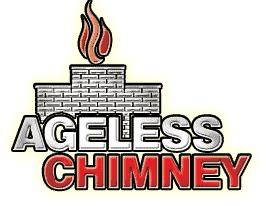Chimney Services in Stuyvesant Square, NY
What our clients say




Read About Us
Browse Fireplace Services
contact us
Understanding the Benefits of Routine Chimney Services in Stuyvesant Square, NY

Importance of Regular Chimney Services
Maintaining your chimney is crucial for home safety. Regular chimney services help prevent fires and improve efficiency. Ageless Chimney is your trusted provider for all chimney needs in Stuyvesant Square, NY. Our team of technicians at Ageless Chimney prioritizes safety in every chimney service we provide.
Our team understands the unique needs of homes in New York City. We offer thorough inspections and cleaning services, ensuring your chimney operates smoothly. Don’t wait until problems arise; maintenance can save you money and stress. You can rely on our solutions to address any challenges your chimney may present, guaranteeing optimal performance and safety for your home.
Expertise
Our technicians are highly trained and experienced in all aspects of chimney services.
Local Knowledge
We know Stuyvesant Square, NY, and the specific challenges faced by chimneys here.
Customer Satisfaction
Your safety and satisfaction are our top priorities. Call 516-795-1313 to schedule your service today.

Chimney Cleaning and Inspection
Regular chimney cleaning is essential to ensure the safe operation of your fireplace. Over time, soot and creosote build up inside the chimney, which can become a fire hazard if not properly cleaned. Ageless Chimney provides thorough chimney cleaning services in Stuyvesant Square, NY, using advanced equipment and techniques to remove all debris. Our team is trained to handle even the most stubborn buildups, ensuring your chimney is clean and safe for use.
Inspections are equally important and should be performed annually to identify any potential issues. A comprehensive inspection by Ageless Chimney includes checking for cracks, blockages, and any structural damage. Early detection of these problems can prevent more significant issues down the line, saving you time and money. Our detailed inspection reports provide a clear picture of your chimney’s condition, helping you make informed decisions about necessary repairs or maintenance.
In Stuyvesant Square, NY, homeowners trust Ageless Chimney for their chimney needs. Our experienced technicians understand the specific requirements of chimneys in New York City and are committed to providing exceptional service. By combining cleaning and inspection services, we ensure your chimney operates efficiently and safely, giving you peace of mind every time you use your fireplace.

Chimney Repairs and Maintenance
Chimneys are exposed to various elements that can cause wear and tear over time. Regular maintenance and timely repairs are crucial to extend the life of your chimney. At Ageless Chimney, we offer comprehensive chimney repair services in Stuyvesant Square, NY, addressing issues such as cracked bricks, damaged mortar, and chimney leaks. Our skilled technicians can handle repairs of all sizes, ensuring your chimney remains structurally sound and safe.
Masonry repairs are a common service we provide, as bricks and mortar can deteriorate due to weather conditions and constant use. Our experts in New York City are proficient in restoring your chimney’s masonry, preventing further damage and potential hazards. Additionally, we offer chimney cap installation and waterproofing services to protect your chimney from moisture, which can lead to more severe damage if not addressed promptly.
Preventative maintenance is key to avoiding costly repairs in the future. Ageless Chimney emphasizes the importance of regular maintenance checks to keep your chimney in optimal condition. Our maintenance services in Stuyvesant Square, NY, include cleaning, inspections, and minor repairs, all aimed at preserving the longevity and functionality of your chimney. Trust our team to provide the care your chimney needs to perform efficiently and safely throughout the year.
Have a question?
Stuyvesant Square is the name of both a park and its surrounding neighborhood in the New York City borough of Manhattan. The park is located between 15th Street, 17th Street, Rutherford Place, and Nathan D. Perlman Place. Second Avenue divides the park into two halves, east and west, and each half is surrounded by the original cast-iron fence.
Local Resources
Useful links for Stuyvesant Square, NY
- Open a Stuyvesant Square, NY map
- Find the Stuyvesant Square, NY United States Post Office
- Locate nearby Stuyvesant Square, NY pharmacies
- View the current Stuyvesant Square, NY weather report
- Browse a list of Stuyvesant Square, NY public and private schools
- Stuyvesant Square, NY is located in New York county in New York State
